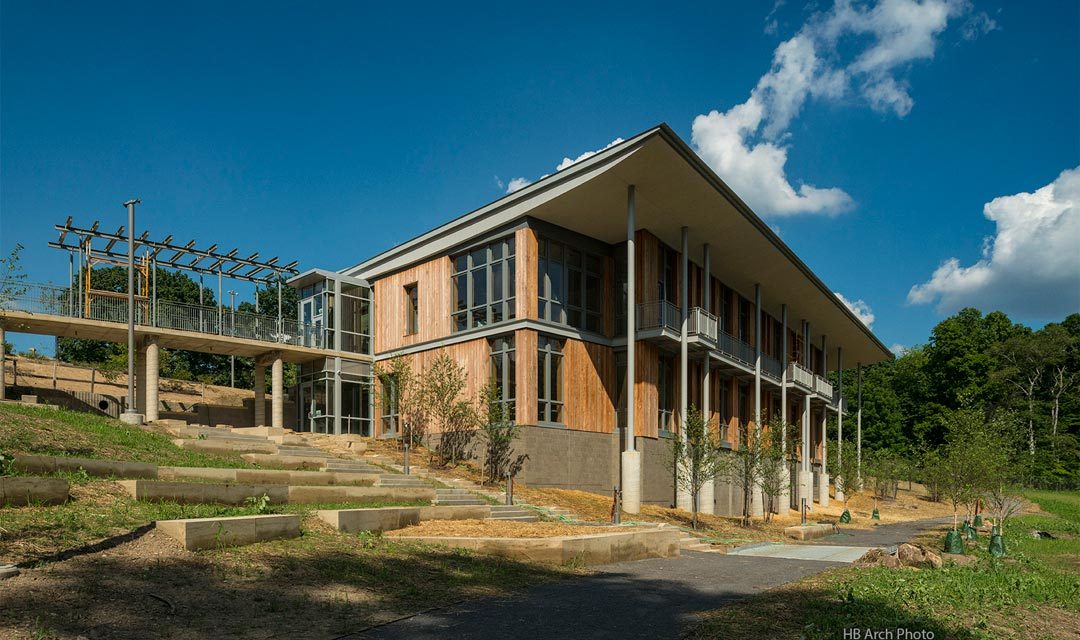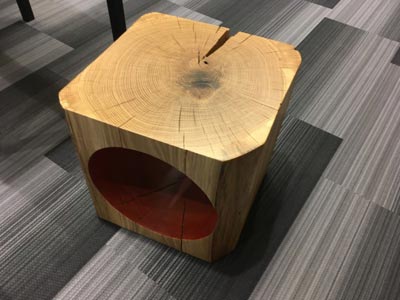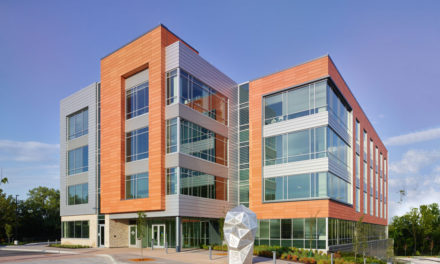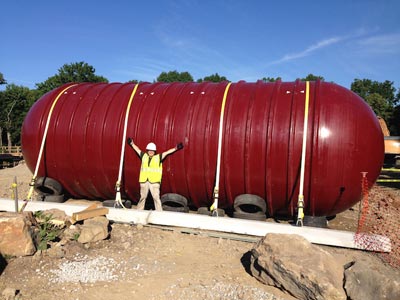
A cistern about to be installed underground. For reference, Rosie is 5-feet tall. Photo by Scott Roller
Pittsburgh is about to get a few shades greener with the opening of the Frick Environmental Center, designed to be the greenest building in the world that is free and open to the public.
The public will get to see it during a celebration at its opening on Saturday, September 10th. Until then, take a look at photos here and learn more about the innovative, environmentally-friendly features that make it so special.
The 15,500 square foot building will collect as much energy as it uses through innovative design including solar PV panel-covered parking areas, roof rainwater collection, material selection, and on-site geothermal wells.
“Everyone involved has been passionate about making the Environmental Center the most creative, functional, beautiful, and green building and site it can possibly be,” says Scott Roller, senior manager of communications and creative for the Pittsburgh Parks Conservancy. “The details are what make this building so interesting. There are support columns purposely placed with irregular spacing to emulate the natural placement of trees in the woods, a kid-sized door right beside the full-sized adult entry door, and interior furniture made from reclaimed wood from the building site, to name just a few.”
A project of the Pittsburgh Parks Conservancy and the City of Pittsburgh, the education center was designed by Bohlin Cywinski Jackson to meet LEED Platinum and Living Building Challenge specifications. As previously reported by NEXT, that means a building must be net-zero energy and water efficient–producing all its own water onsite.
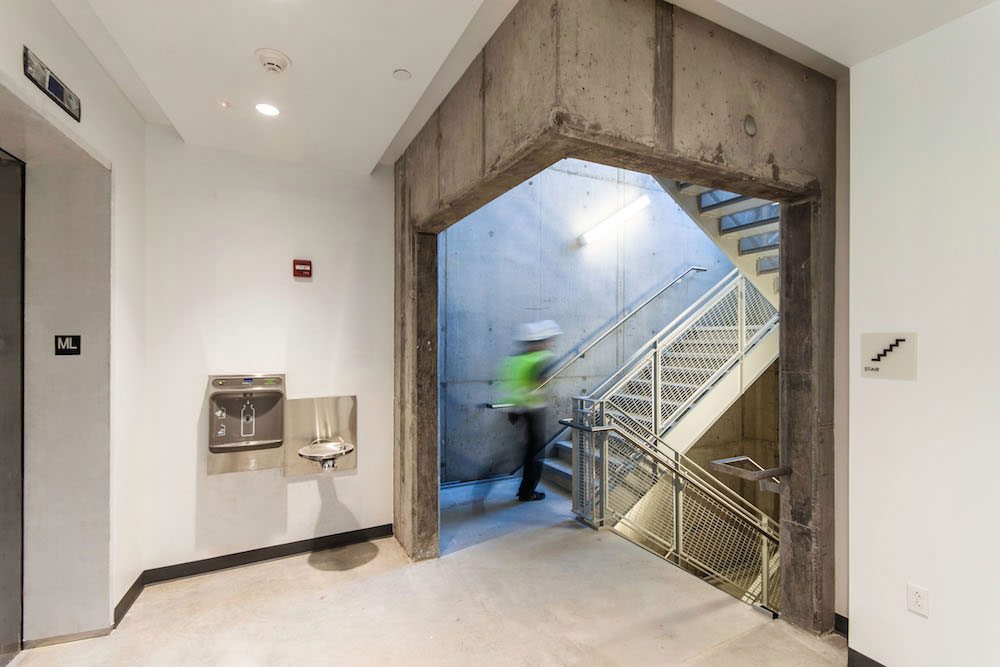
Stairwells feature raw concrete and natural light. Be sure to bring your refillable bottle! Photo by Jeremy Marshall
Construction of the center began in August of 2014 with PJ Dick as the contractor and will include welcoming indoor learning spaces, a community gathering and reception area,, as well as an amphitheater built into the hillside, landscape restoration, and gardens. It will also house public restrooms and offices.
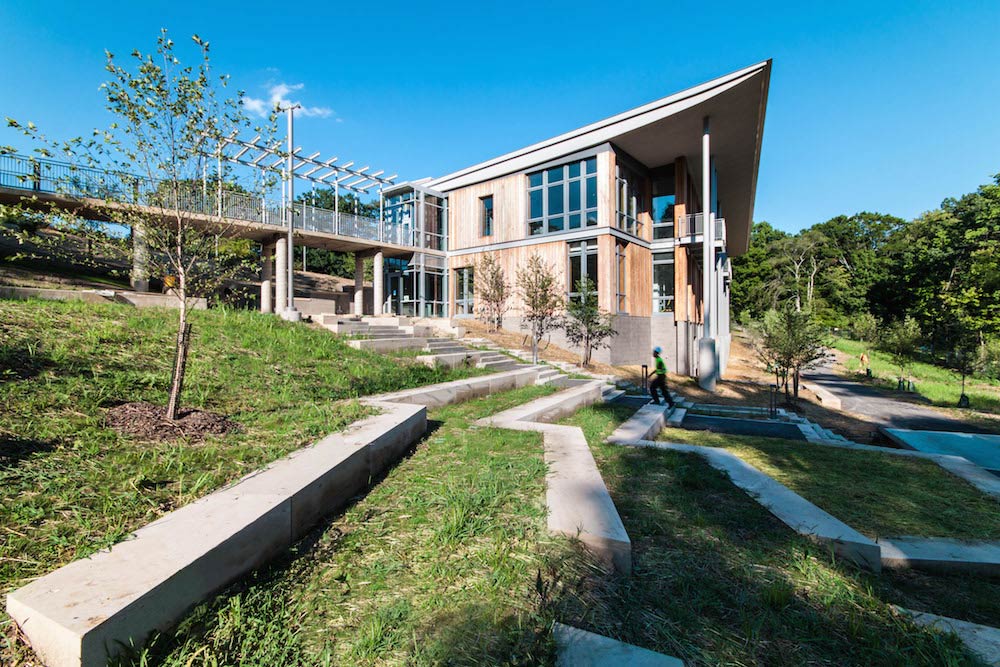
The Frick Environmental Center will provide children from all over Pittsburgh with access to state-of-the-art environmental education programs.
“Throughout planning and construction, the Parks Conservancy always kept the most important thing in mind – the kids and adults who will use the Frick Environmental Center,” says Camila Rivera-Tinsley, Pittsburgh Parks Conservancy Director of Education. “Within the first five years of operation, we estimate that we will serve 20,000 kids annually through environmental education programs in addition to several hundred thousand casual park visitors. Connecting people to nature in the greenest environment possible has long been the goal.”
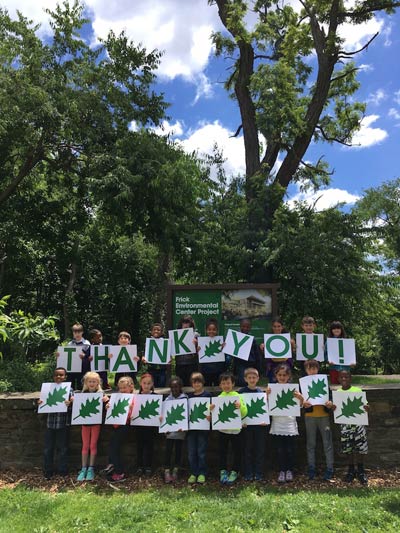
Colfax Elementary first-graders saying thank you for the new education center in Frick Park. Photo by Scott Roller.
Visit Pittsburgh Parks Conservancy website to get a schedule for the Saturday, September 10th public celebration.
This article was originally published in Next Pittsburgh, August 16, 2016, authored by Maya Henry. See more in Next Pittsburgh City Design, Environment, Squirrel Hill.
About the author
Maya Henry is a writer, blogger and planner who has worked for the City of Pittsburgh, at the nonprofit Lawrenceville Corporation marketing and supporting small businesses in Lawrenceville, and at AIA Pittsburgh, the local chapter of the American Institute of Architects. Maya received an M.A. in Historic Preservation Planning from Cornell University in 2008.
PRISM extends a special thank you to Maya Henry and to Next Pittsburgh.

